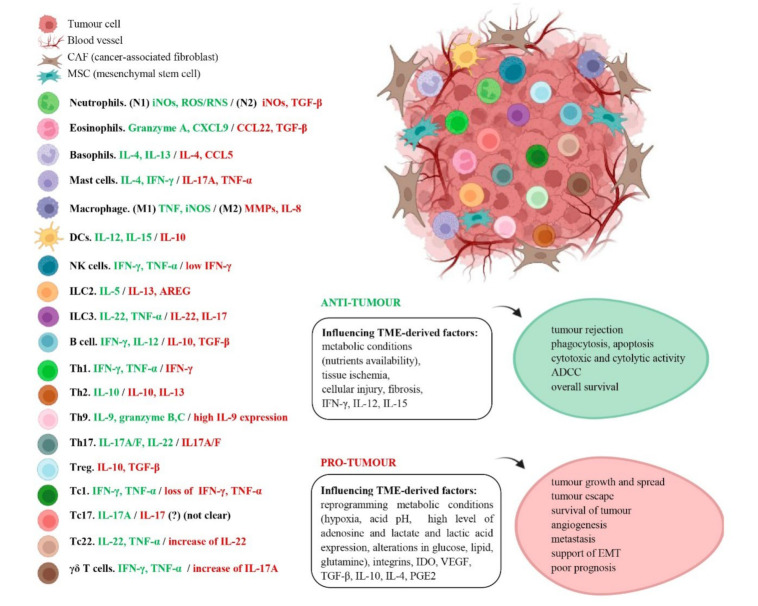Figure 2.
TME in anti- and pro-tumour conditions. The TME is a heterogeneous mass of tumour cells, stromal cells (such as MSC, CAF), blood vessels and immune cells. On the left, the cytokines secreted by the different types of immune cells are shown. Those released in anti-tumour activity are shown in green and those released in pro-tumour activity in red (in some cases the same cytokine has dual effect). On the other hand, on the right, TME-derived factors (which influence immune cell fate) in general, and their outcomes, accordingly, are shown, both in an anti-tumour and pro-tumour microenvironment. iNOS: inducible nitric oxide synthase; ROS/RNS: reactive oxygen species/reactive nitrogen species; TGF-β: transforming growth factor beta; CXCL9: C-X-C chemokine ligand 9; CCL22: C-C Motif Chemokine Ligand 22; IL-4: interleukin-4; IFN-γ: interferon gamma; TNF-α: tumour necrosis factor alfa; MMPs: matrix metalloproteinases; AREG: amphiregulin; TME: tumour microenvironment; ADCC: antibody-dependent cellular cytotoxicity; IDO: indoleamine 2,3-dioxygenase; VEGF: vascular endothelial growth factor F; PGE2: prostaglandin E2; EMT: epithelial-mesenchymal transition.

